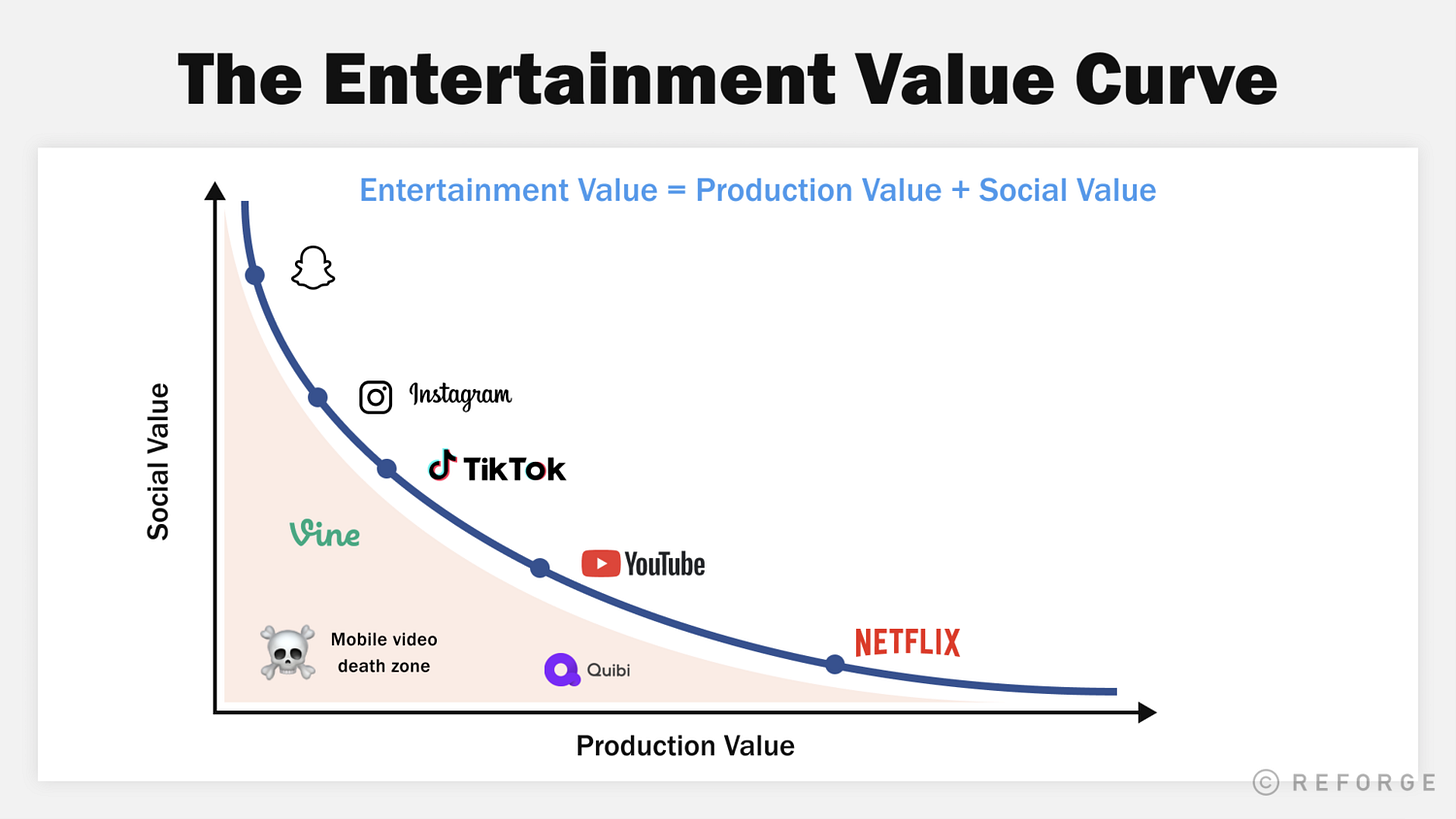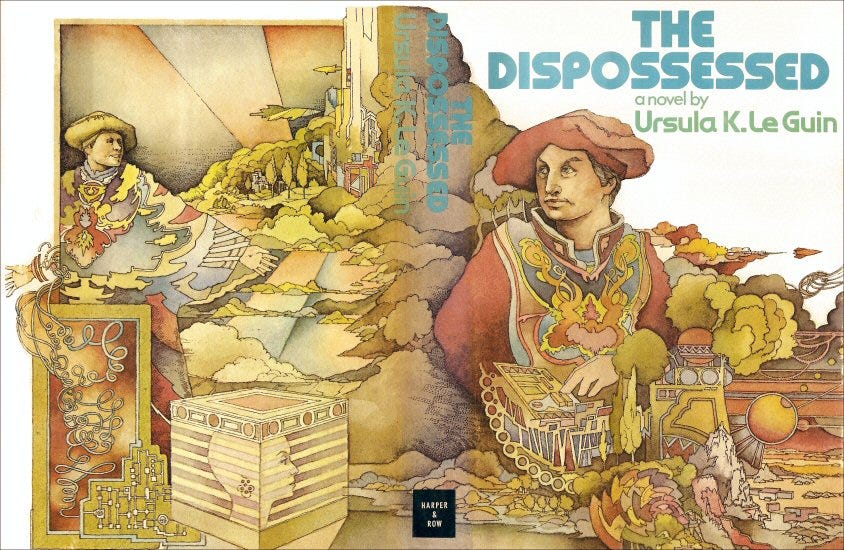👂✨The Nexialist #0061
The Art of Listening | How to Speak So That People Want to Listen | The Entertainment Value Curve | Disambiguation | Everything is Everything | Visualizing and Communicating Complexity | Sightseeing
Welcome to this week’s list of neuron stimulating links, The Nexialist
This week I caught myself again trying to distract from the dire situation of Ukraine and how that story is unfolding. I hope the content at The Nexialist brings you reflections also on how to look at that. There’s probably a lot going on on your feed about it, but one interview that brought me some historical perspective I didn’t know was Yuval Noah Harari’s for TED.
For Woman’s Day, I would like to thank all women who are crucial for the positive change in the world. One of my favorite things this year was the @PayGapApp, a Twitter profile exposing the Gender Pay Gap from companies tweeting about International Women's Day.
Now, get your tea/coffee and scroll away, as slowly as you need:
👂The Art of Listening
I’ve had a bit of a crush on Simon Sinek since his TED Talk when he introduced the Golden Circle (and I just realized it has been more than 10 years, wow). In this clip, he managed to enchant me with some good tips about the Art of Listening (not the Act of Listening!). I wrote down a few loose notes while watching and hopefully, they make sense to you, but I would just press play:
-Creating an environment in which the other person feels heard;
-Replacing judgment with curiosity;
-“Go on… tell me more… what else…” and then there’s a safe space;
-We do not teach listening in schools and it is THE way of building trust, finding common ground in opposition, in business, politics, war.
-Peace talks vs. peace listens
🗣How to Speak So That People Want to Listen
Of course, the algorithm immediately took me to another TED Talk and I just pressed play, as I’m trying to develop my talking skills. Julian Treasure is a sound and communication expert who has a few well-known TED Talks. I only watched this one so far and it was great to learn and have a few laughs. Here are my notes (again, I recommend playing this, you will learn something plus some exercises to do before your big meeting):
The 7 deadly sins of speaking: gossip, judging, negativity, complaining (he called it viral misery and I love it), excuses (blame throwing), embroidery/exaggeration/lying, dogmatism
4 cornerstones for our speech to be powerful: HAIL. Honesty, Authenticity, Integrity and Love.
The toolbox of ways we can modulate and project our voices, which I was so pleased to see. It gave me some tools to analyze my own voice and think about how I would like to work on it: register, timbre, prosody, pace, pitch and volume.
🤳The Entertainment Value Curve
I came across this article by Ravi Mehta for Reforge and it made me think a lot. If entertainment value was once mostly about production value (think Hollywood), now the social value is just as important (if not more) in the equation. Both are important in the equation, depending on the context.
Entertainment Value = Production Value + Social Value
Y-Axis = Social Value = The level of personal connection the viewer has with the content.
This connection is often the result of having a relationship with the creator of the content or the person who shared the content with me. Content created by friends has higher social value than content created by people the viewer has no relationship with. Over time, a viewer can establish a relationship with a creator (even if that relationship is entirely one-way) by following that creator and interacting with that creator. This happens with fans who feel connected to influencers and celebrities. Platforms like TikTok and YouTube are facilitating this connectedness by making creators, at all levels of fame, feel more accessible.
This reminded me of the Parasocial Relationships I brought up some editions ago.
⚠️Disambiguation
Sentiers has a wonderful newsletter (which I’m now realizing unconsciously inspired me with The Nexialist format). This week they brought this text from Mandy Brown’s newsletter, A Working Letter, where she beautifully analyses some of Ursula Le Guin’s work through the lens of ambiguity and applies that to today’s world, and in today’s workspace.
I suspect some of the ire that comes in for Le Guin’s subtitle is a result of the fact that it’s a tautology: every utopia is ambiguous, just as every dystopia is. Ambiguity is the ordinary course of affairs. If you find yourself at a juncture where once you felt circumstances were unambiguous and now they are no longer, likely what’s changed is you, not the circumstances. This is why Shevek, the protagonist in The Dispossessed, crosses the wall: he needs to complicate the views of people on both sides, to make the ambiguity present and real. His transgression serves as the physical embodiment of that ambiguity: the relationships he builds, the interactions he has, are designed to make it impossible to ignore.
Read: Disambiguation - A Working Letter
🤖Everything is Everything
Sevdaliza released her new EP, Raving Dahlia, and she does not cease to impress us. The visuals are just so good and I love the creepiness of this robotic character that keeps coming back in the videos.
🧠Visualizing and Communicating Complexity
Another content from the last issue of Sentiers pulled me in this week. This one is from Dark Matter Labs, “a strategic discovery, design and development lab working to transition society in response to the technological revolution and climate breakdown.” They talk about The Stack (this format above) and Complexity Mapping. I think most of us are used to looking at these visual representations with certainty, and they opened my eyes to how maps are non-linear and open-ended, open for interpretation, and are “always incomplete”. It was good to learn that “maps are a balance between complexity and clarity” and “a research tool for collective sensemaking,” not these perfect tools.
The Stack became our way to communicate interconnected ideas at various stages, and influences how we organise our information architecture on Notion. Over the years, The Stack’s taken on a wide array of colours and configurations, ongoing a regular cycle of becoming excessively elaborate, and eventually simplified again, but ultimately still stands as an intuitive metaphor for complexity, simultaneity and visibility.
Read: DM Note # 7: Visualising and Communicating Complexity
👁Sightseeing
More ambiguity that somehow my algorithm brought…
“Sightseeing looks at the thrill and struggle of urban life. It’s a song about finding meaning by constantly dissolving, renewing, and redefining oneself, amidst the machinery of the city. The video explores how psychic traces left by memory can transform architecture, and animate parallel worlds. It’s also a continuation of an ongoing theme in our work, investigating the relationship between public and private space."
🌪Hurricane
Not much related to the rest of this week’s topics, but I just needed to share the musical find of the week: Cannons. Their new EP, Hurricane, is exactly the type of stuff that I like.
❤️If anything made your brain tingle, click like and don't hesitate to share it with the world. It helps The Nexialist to reach more curious minds. See you next week!🦦
🫀If you enjoyed this newsletter, please share it with your friends. If someone amazing sent it to you, tell them you love them, and you can subscribe at thenexialist.substack.com. If you want to know what a Nexialist is, click here.
🤙Call me…
If you like what you see here and your project, brand or business needs some ideas or inspiration from outside your bubble, maybe you need a Nexialist to help you out 🙋🏻♂️ I can participate in brainstorms and workshops, guide inspiration sessions, or provide you with creative research. You can always send me an e-mail to figure something out together.










